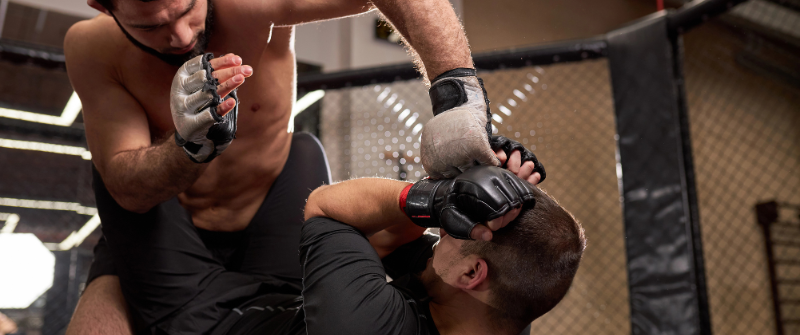
- by NEXO Team
- July 26, 2024
Reducing martial arts studio insurance costs through better risk management is a multifaceted approach involving proactive measures to enhance safety, minimize liabilities, and demonstrate responsible management practices. By focusing on comprehensive risk assessment, injury prevention strategies, staff training, and adherence to legal and ethical standards, studios can lower their Jiu-Jitsu studio insurance premiums while creating a safer environment for participants. Here's a detailed exploration of how Jiu-Jitsu studios can achieve these goals.
Understanding Jiu Jitsu Studio Insurance Costs
Martial arts studio insurance typically includes general liability coverage and workers’ compensation insurance. General liability insurance protects against claims of bodily injury or property damage resulting from studio activities, while workers’ compensation covers injuries sustained by instructors or staff during work-related activities. Insurance premiums are influenced by the studio's safety record, claims history, risk management practices, and adherence to safety protocols.
Also Read: The Importance of General Liability Insurance for Jiu-Jitsu Facilities
Key Strategies to Reduce Insurance Costs
Conducting a thorough risk assessment is the first step towards effective risk management:
Identify hazards: Evaluate potential risks associated with training activities, equipment usage, facility layout, and participant demographics.
Assess likelihood and severity: Determine the likelihood of each risk occurring and its potential impact on participants, staff, and the studio.
Prioritize risks: Address high-risk areas that could lead to serious injuries or frequent claims.
Develop risk mitigation strategies: Implement preventive measures to minimize identified risks and create emergency contingency plans.
By proactively identifying and mitigating risks, studios can reduce the frequency and severity of incidents for lower insurance premiums.
Injury Prevention Strategies
Preventing injuries is crucial for reducing insurance claims and demonstrating commitment to participant safety:
Structured warm-up and cool-down: Implement comprehensive warm-up routines to prepare participants physically and mentally for training, reducing the risk of strains, sprains, and other injuries.
Skill-appropriate training: Tailor training sessions to participants' skill levels to ensure techniques are practiced safely and effectively.
Emphasis on technique: Prioritize proper technique over strength to minimize the risk of overexertion and musculoskeletal injuries.
Use of protective equipment: Ensure all participants wear appropriate protective gear, such as mouthguards, headgear, and joint supports, to reduce the severity of injuries during sparring and grappling.
By promoting injury prevention through structured training protocols and equipment use, Jiu-Jitsu studios can create a safer training environment and mitigate insurance risks.
Staff Training and Supervision
Qualified staff and effective supervision are critical components of risk management:
Instructor certification: Ensure all instructors are certified in Jiu-Jitsu instruction and possess adequate teaching experience.
First aid and CPR training: Equip instructors and staff with essential first aid skills to provide immediate assistance in case of injuries or medical emergencies.
Supervision: Monitor training sessions closely to correct technique errors, enforce safety protocols, and prevent unsafe practices among participants.
Well-trained staff contribute to a safer training environment, reduce the likelihood of accidents, and demonstrate professionalism to insurance providers, potentially resulting in lower premiums.
Also Read: Reducing Jiu-Jitsu Studios Insurance Costs With Better Risk Management
Safe Training Environment
The physical environment of the studio plays a significant role in ensuring participant safety:
Quality mats: Use high-density, impact-absorbing mats to cushion falls and reduce the risk of impact injuries during throws and ground grappling.
Facility maintenance: Regularly inspect and maintain training equipment, facilities, and amenities to prevent hazards and ensure safe conditions.
Hygiene and cleanliness: Implement strict hygiene practices to reduce the spread of infections among participants, especially in contact sports like Jiu Jitsu.
Space management: Optimize space utilization to minimize overcrowding and prevent collisions during training activities.
Creating a safe and well-maintained training environment protects participants, mitigates liability risks, and supports lower martial arts studio insurance premiums.
Also Read: Improving Workers’ Compensation Protections in Jiu-Jitsu Studios Through Safety Practices
Legal and Ethical Compliance
 Adhering to legal and ethical standards minimizes legal risks and martial arts studio insurance liabilities. Here are some provisions to consider:
Adhering to legal and ethical standards minimizes legal risks and martial arts studio insurance liabilities. Here are some provisions to consider:
Liability waivers: Require participants to sign waivers acknowledging the risks associated with martial arts training and releasing the studio from liability for injuries resulting from inherent risks.
Insurance coverage: Maintain adequate liability insurance coverage to protect against potential claims and lawsuits.
Regulatory compliance: Stay informed about local regulations and industry standards for martial arts training and safety practices.
Professional conduct: Uphold ethical behavior, respect participant rights, and promote a culture of safety and respect within the studio.
Compliance with legal requirements and ethical standards enhances the studio's credibility, reduces legal exposure, and supports favorable insurance rates.
Documentation and Incident Reporting
Accurate documentation is crucial for managing insurance claims and demonstrating proactive risk management. This includes the following:
Incident reports: Document all injuries, accidents, near-misses, and participant complaints within the studio.
Medical records: Maintain records of medical treatments provided to injured participants, including follow-up care and rehabilitation.
Risk assessment records: Keep records of risk assessments, safety audits, and corrective actions taken to address identified hazards.
Insurance claims management: Submit thorough and timely insurance claims with supporting documentation to facilitate claims processing and resolution.
Comprehensive documentation supports the studio's risk management efforts, facilitates insurance claims management, and strengthens the studio's position with insurers.
Continuous Improvement and Evaluation
Regularly review and update risk management strategies to address evolving risks and improve safety practices:
Risk assessments: Conduct periodic risk assessments to identify new hazards, assess the effectiveness of existing controls, and prioritize risk reduction efforts.
Feedback and evaluation: Solicit input from participants, instructors, and staff regarding safety concerns, incident reporting processes, and overall safety culture.
Training and development: Provide ongoing training and professional development opportunities for staff to enhance skills in risk management, safety protocols, and emergency response.
By continually evaluating and improving risk management practices, studios can proactively address safety issues, reduce insurance costs, and foster a culture of safety and excellence.
Conclusion
Reducing insurance costs for Jiu Jitsu studios through better risk management requires a comprehensive approach prioritizing injury prevention, staff training, legal compliance, safe training environments, documentation, and continuous improvement. By implementing structured risk assessment processes, injury prevention strategies, adhering to legal and ethical standards, and continually evaluating and improving safety practices, Jiu-Jitsu studios can mitigate insurance risks, lower premiums, and create a safer and more sustainable training environment for students and instructors.
To learn more about Jiu-Jitsu studio insurance and risk management, contact NEXO today!
Categories
Fill out a short form to contact us with your questions or to receive a customized quote.
Recent Posts
-
 NEXO’s Affinity Program: How Fitness Suppliers and Associations Can Partner for Profit and Protection
December 5, 2025
NEXO’s Affinity Program: How Fitness Suppliers and Associations Can Partner for Profit and Protection
December 5, 2025 -
%20(1).png) How to Insure an MMA Gym Without Paying for Coverage You Don’t Need
December 5, 2025
How to Insure an MMA Gym Without Paying for Coverage You Don’t Need
December 5, 2025 -
 Mastering Liability for Jiu-Jitsu Tournaments and Martial Arts Events
December 5, 2025
Mastering Liability for Jiu-Jitsu Tournaments and Martial Arts Events
December 5, 2025 -
 From Zen to Zoning: What Every Yoga and Pilates Studio Owner Should Know Before Signing a Lease
December 5, 2025
From Zen to Zoning: What Every Yoga and Pilates Studio Owner Should Know Before Signing a Lease
December 5, 2025 -
%20(1).png) Why Your Referral & Loyalty Program Can Impact Your Insurance Rates
December 5, 2025
Why Your Referral & Loyalty Program Can Impact Your Insurance Rates
December 5, 2025

